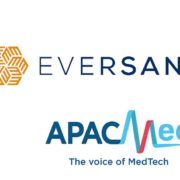Increasing health span: will 90 be the new 40?
Increasing health span: will 90 be the new 40?
Published Jul 15, 2022
By Gail Dutton
BioSpace
While 90 may not be the new 40, it may become the new 75 or 80 as science, technology and policies converge to leverage the gains from the genomics revolution, which are making precision medicine a clinical reality.
Earlier, “Healthspan was correlated to the natural progression of disease and how we could improve quality of life,” Robert Groebel, VP of global life sciences strategy at Definitive Healthcare, a healthcare commercial intelligence company, told BioSpace. “Now, more and more organizations are focused on cures…on eradicating disease.”
To that point, medicines have played a crucial role in increasing life expectancy, even recently. Between 1990 and 2015 overall life expectancy increased by more than three years,” Groebel said, citing a study published in Health Affairs.
Eradicating Disease with Precision Medicine
This increased lifespan is attributable to improvements in mortality rates for such conditions as HIV, breast cancer, heart disease and other serious conditions that are, in turn, the result of advances in precision medicine. The emphasis on comparative effectiveness research for new drugs, under the Affordable Care Act, also helped catalyze the change in focus from me-too drugs to innovation, as more was learned through genomics, metabolomics and proteomics, which made biomarkers and companion diagnostics an expected part of diagnosis and drug development. Together, these advances launched an explosion in immunotherapies that is resulting in real cures and earlier diagnoses and, therefore, more healthy years for individuals.
Going forward, “You’ll see, more and more, both large and small pharmas, becoming very committed to eradicating diseases, and that speaks to the payer/provider/industry partnerships,” Groebel said. “The downstream effect is that pharma has a greater voice in healthcare.”
The ability to specifically identify who can or can’t benefit from certain interventions encourages payers to reimburse for very high-value – and sometimes very expensive – drugs, with the assurance of mitigating overall costs.
This is based upon the analysis of big data by payers, providers, academics and drug companies, all of which are partnering for enhanced data sets and fine-tuned analysis algorithms. Consequently, Groebel said, “It’s far easier today to harness the power of data to clearly illustrate the patient journey and identify where an earlier intervention has a downstream effect – not only to the patient’s quality of life but also to the overall cost of care, even in the near-term.
Introducing Pay-for-performance Agreements
“The other thing that’s interesting is the way reimbursement is being negotiated,” Groebel continued. “More and more drug companies are getting involved in at-risk contracting,” he said, noting Novartis’ pioneering pay-for-performance agreements with payers throughout the world, which began a few years ago. Pay for performance reimbursement contracts, however, “require drug companies to perform a high level of diligence around the patient journey, to understand claims and historical treatment data so that when they present a health economic position, the value for that patient population is very clear.”
Wellness is part of the equation, too, Groebel said. “Wellness has become top of mind, not just from drug companies but from employers. There’s a significant incentive at the employer level – which is bearing the burden of employees’ healthcare costs – to encourage employees to maintain or improve their health and wellness. You see this manifest through reimbursements for gym memberships (and similar perks) and through the use of today’s proliferation of wearables data.” By leveraging that data and linking to data from external sources (connecting claims data to activity data, for example), pharma, payers and providers can understand at a deeper level what’s happening with their populations and perhaps intervene earlier to prevent situations from escalating.
Currently, this level of analysis is conducted at the population level, with de-identified data, rather than for identifiable individuals, he pointed out. But even at this level, employers or even cities can track health trends and develop proactive programs to address likely issues before they become critical.
As all these elements continue to come together, people’s healthspans will undoubtedly improve.
“I would like to say that in the next 10 to 20 years, major forms of cancer will be cured and mortality will be reduced. I think you will continue to see the drug industry focus on rare diseases and try to eradicate diseases that have been under-addressed,” he said.
Groebel also predicted that the biopharma industry will be more vigilant regarding possible pandemic threats and will develop vaccines or therapeutics to combat likely threats. For organizations focused outside infectious diseases, “I think you will continue to see the proliferation of innovation and will see more partnerships emerge,” he said. This includes industry-academic partnerships focused on a particular disease area or an action area that can be applied to multiple diseases.”
Pan-disease Focused Research
The focus on research is changing from diseases to pan-disease symptoms, he added. For example, “Boehringer Ingelheim is developing a number of compounds that are symptom-focused rather than disease-focused,” Groebel said. In this case, the company focused on a symptom – cognitive impairment – that is associated with both schizophrenia and Alzheimer’s disease.
Computer-driven interventions also will increase in number, he predicted, citing the camera-in-a pill that enables video capsule endoscopy. It was developed at Yale University nearly two decades ago and makes colonoscopies non-invasive.
“At a patient level, I think you will continue to see more ownership of [one’s] own healthcare,” as people take a more proactive approach to care. The millennial generation will drive that, he predicted. “They are very attuned to who they are and what they need to do, and will drive us to be very proactive about health risks, outcomes and the types of interventions that are needed to ensure life expectancies continue to increase.”
Increasing an individual’s healthspan is a real probability, population-wide, as interventions continue to improve and as providers, payers and patients see tangible benefits from those innovations. Today, as Groebel pointed out, “The pharmaceutical industry is embracing this concept.” Importantly, so are payers.
Source: BioSpace

 BioSpace
BioSpace








